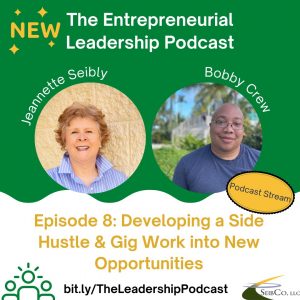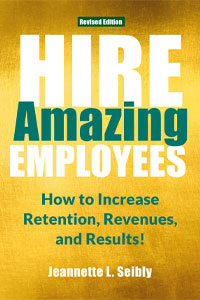A note from Jeannette about using qualified assessments for talent readiness: Attracting scarce skilled job candidates and preparing current employees is critical for talent readiness. Using suitable job fit assessments and skills testing are vital, but require using the correct ones. Contact me for a confidential conversation about how to get started.

- Are you tired of hiring and promoting the wrong people?
- Are you finding it challenging to find skilled, qualified job candidates?
- Are you frustrated because you keep hiring people for the wrong jobs?
The biggest challenge facing many employers today, and in the foreseeable future, is talent readiness! Skilled workers are scarce. And many employees need upskilling and reskilling to meet technological, economic, and greener business practices. (ERE|Recruiting News & Information)
It’s time bosses, and leaders got serious about using qualified assessments and skills testing. These are essential to ensure your employees and job candidates are talent ready. As a leader, you can no longer avoid using qualified assessments without losing customers, top talent, and profitability.
Assessments Are Important to Ensure Talent Readiness
According to Talent Board’s 2022 research, candidates and employees, regardless of gender, race, and age, expressed higher perceived fairness when companies used job-related assessments. It also improved the company’s reputation as a good employer; supported diversity, equity, and inclusion (DEI) initiatives; and improved hiring, promotion, and job transfer results.
Choosing the correct pre-employment assessment is difficult. Too often, leaders and bosses rely on assessments that are only appropriate for team building and communication development. However, they failed to conduct research to ensure the assessment(s) meet Department of Labor (DOL) guidelines for PRE-employment purposes, and post-employment promotions and job transfers. Using the wrong assessment can get you in trouble.
Assessments that meet DOL guidelines have higher validity, reliability, and predictive validity. Some also provide cognitive abilities and occupational interests information. When used as directed, the correct assessments provide superior insights for talent readiness. (READ: Use the Right Assessments and Skills Tests, Hire Amazing Employees, Chapter 9)
Tips to Improve Talent Readiness
Use Qualified Tools. Many hiring managers overlook great candidates and employees by not using qualified tools. Using the right assessments removes the mystery of assessing for actual skills and job fit. Using high-quality assessments and skills testing shows who employees and job candidates are, not how they want to be seen. For example, many job candidates and employees want jobs in sales because they believe it’s where they’ll make the most money. The challenge is they can talk the talk but fail to produce the required results of prospecting, presenting, and closing sales.
Deep Dive Now. Focus on what is actually required for your workforce to be talent ready. Poll customers, talk with employees, and network with industry peers to help determine current and future requirements.
Train Your People. Training for hiring bosses and recruiters is often overlooked due to time and money, and egos. But failure to get real and use and follow a strategic selection system will hurt your company’s agility and survival. Savvy job candidates and skilled talent will leave due to being overlooked for the right jobs and opportunities.
Stop Requiring College Degrees. Focusing on talent readiness predicts job performance more than hiring based on education and past work experience. Employees who don’t feel they are utilizing their skills are 10 times more likely to seek a new job. (World Economic Forum)
Ask Job-Related Interview Questions. It’s a bad practice to rely on pseudo-psychology type questions like, “What’s your favorite color?” “Who’s your favorite author and book?” These do not support talent readiness and can create employment liability issues. Focus on the job skills required and the person’s interest and aptitude to learn the job.
Know Your Employee and Job-Candidate Skills. Use valid skills tests to determine the depth and breadth of job candidates and current employees’ proficiency in using the skills. Contrary to popular myths, employees and job candidates enjoy well-design assessments and skills tests to help them develop and improve their skills and employability.
Clarify Education and Training Required. Provide ongoing training to upskill and reskill your people. Remember, a certificate is not an indicator of the employee’s capability to use critical thinking and create solutions. It’s why skills testing is required. (Consider a recent conversation with a customer service rep who lacked the interest or skills to use the company’s system to resolve your issue. Frustrating, wasn’t it?) Don’t overlook developing communication, critical thinking, teamwork, and resiliency skills too.
Ask an Often-Overlooked Question! Ask job candidates and current employees, “What are your career goals now and in the future!” Their opportunities to pursue career and life goals are crucial indicators of long-term job satisfaction, and will impact your company’s retention. (Talent Board) Develop a personalized career path program, including the necessary education and training required to help employees succeed.
(c)Jeannette Seibly 2023 All Right Reserved
 Jeannette Seibly is The Leadership Results Coach. She is an award-winning international executive coach, speaker, and business author. Her wisdom of over 30 years guides clients to work through sticky situations and challenging relationships. Contact Jeannette for a confidential discussion. PS: She’s also a three-time Amazon Best-Selling Author!’
Jeannette Seibly is The Leadership Results Coach. She is an award-winning international executive coach, speaker, and business author. Her wisdom of over 30 years guides clients to work through sticky situations and challenging relationships. Contact Jeannette for a confidential discussion. PS: She’s also a three-time Amazon Best-Selling Author!’
A note from Jeannette about using qualified assessments for talent readiness: Attracting scarce skilled job candidates and preparing current employees is critical for talent readiness. Using suitable job fit assessments and skills testing is vital, but it requires using the correct ones. Contact me for a confidential conversation about how to get started.
 Have you considered the benefits of strengthening your superpowers and becoming a great boss? It’s not complicated, but it does require an experienced sounding board. I have extensive experience guiding bosses and leaders to work with and through their teams to achieve unprecedented results. Contact me to learn more about my in-depth, one-on-one hour coaching program. Remember, coaching speeds up your ability to be talent ready.
Have you considered the benefits of strengthening your superpowers and becoming a great boss? It’s not complicated, but it does require an experienced sounding board. I have extensive experience guiding bosses and leaders to work with and through their teams to achieve unprecedented results. Contact me to learn more about my in-depth, one-on-one hour coaching program. Remember, coaching speeds up your ability to be talent ready.


 Jeannette Seibly is The Leadership Results Coach. She is an award-winning international executive coach, speaker, and business author. Her wisdom of over 30 years guides clients to work through sticky situations and challenging relationships.
Jeannette Seibly is The Leadership Results Coach. She is an award-winning international executive coach, speaker, and business author. Her wisdom of over 30 years guides clients to work through sticky situations and challenging relationships.  Have you considered the benefits of strengthening your superpowers and becoming a great boss? It’s not complicated, but it does require an experienced sounding board. I have extensive experience guiding bosses and leaders to work with and through their teams to achieve unprecedented results.
Have you considered the benefits of strengthening your superpowers and becoming a great boss? It’s not complicated, but it does require an experienced sounding board. I have extensive experience guiding bosses and leaders to work with and through their teams to achieve unprecedented results. 
 How’s your leadership development progressing? Are you moving forward … or a tad stuck? Do you need a “nudge” or “kick-in-the-butt?” Want to accelerate and soar your results?
How’s your leadership development progressing? Are you moving forward … or a tad stuck? Do you need a “nudge” or “kick-in-the-butt?” Want to accelerate and soar your results? 
 Announcing New Workshop! Traditional leadership (e.g., formal, metrics-driven) is being replaced with human leadership (e.g., focus on the human dynamics that impact results). For example, “That’s how it’s always been done.” vs. “Great idea. How do you recommend we implement it?” However, your managers and directors are being overlooked regarding the training required to be an effective boss and leader. Read about my newest workshop:
Announcing New Workshop! Traditional leadership (e.g., formal, metrics-driven) is being replaced with human leadership (e.g., focus on the human dynamics that impact results). For example, “That’s how it’s always been done.” vs. “Great idea. How do you recommend we implement it?” However, your managers and directors are being overlooked regarding the training required to be an effective boss and leader. Read about my newest workshop: 
 This week’s PODCAST: Listen to Grow your side hustle into a full-time job with my guest, Bobby Crew on
This week’s PODCAST: Listen to Grow your side hustle into a full-time job with my guest, Bobby Crew on 

 Are you asking good, job-related interview questions? When hiring new employees or rehiring former ones, ask about their ability to handle mistakes. Why? 90% of new hires fail because they dismiss coaching or advice about how to improve. Get your copy of the newly released,
Are you asking good, job-related interview questions? When hiring new employees or rehiring former ones, ask about their ability to handle mistakes. Why? 90% of new hires fail because they dismiss coaching or advice about how to improve. Get your copy of the newly released, 
 Why do new hires leave so soon? There can be many reasons. But it’s often due to NO (or the poorly designed) new employee orientation and onboarding program! Be part of the 12% that onboards effectively! Want ideas to help you get started? Get your copy of the newly released,
Why do new hires leave so soon? There can be many reasons. But it’s often due to NO (or the poorly designed) new employee orientation and onboarding program! Be part of the 12% that onboards effectively! Want ideas to help you get started? Get your copy of the newly released, 
